Higher education institutions seek creative ways to cut costs while boosting outcomes. However, serving a diverse and evolving student population is increasingly more challenging without precise insight into which student success initiatives and programs help improve student outcomes at their institution.
Shifting the focus from “What will this cost?” to “What return will this initiative generate?” allows institutions to adjust and reallocate resources to the most effective initiatives. This approach helps prioritize strategies that will significantly improve student outcomes and make the best use of time, energy, and funds. This guide features evidence-based practices Civitas Learning partners use to improve outcomes and increase revenue.
3 Steps for Shifting to an ROI-Generating Strategy include:
Step 1: Let Impact on Persistence Guide Investment Decisions
Measuring the impact of Student Success Initiatives (SSIs) can’t rely only on lagging indicators like retention and completion outcomes. Institutions require precise, real-time persistence predictions to know what specific programs or initiatives influence a student’s continuation to the next term. This allows them to make timely adjustments and invest in the most effective interventions for maximum impact.
Persistence gives teams a leading indicator of success by:
- Providing real-time insight into student behaviors and needs to help make informed decisions about future programs
- Showing how initiatives impact student outcomes and contribute to net tuition revenue each term
![]()
1.9+ Persistence Lift and
$150K ROI in a Single Term
A four-year public partner of Civitas Learning discovered that many students did not respond to general outreach.
Using real-time persistence predictions through the Civitas Learning platform enables advisors to tailor engagement for student groups and focus outreach during critical moments. As a result, persistence improved by 1.9 percentage points, generating a $150k return on investment in retained tuition dollars in one term.
The Value of Persistence
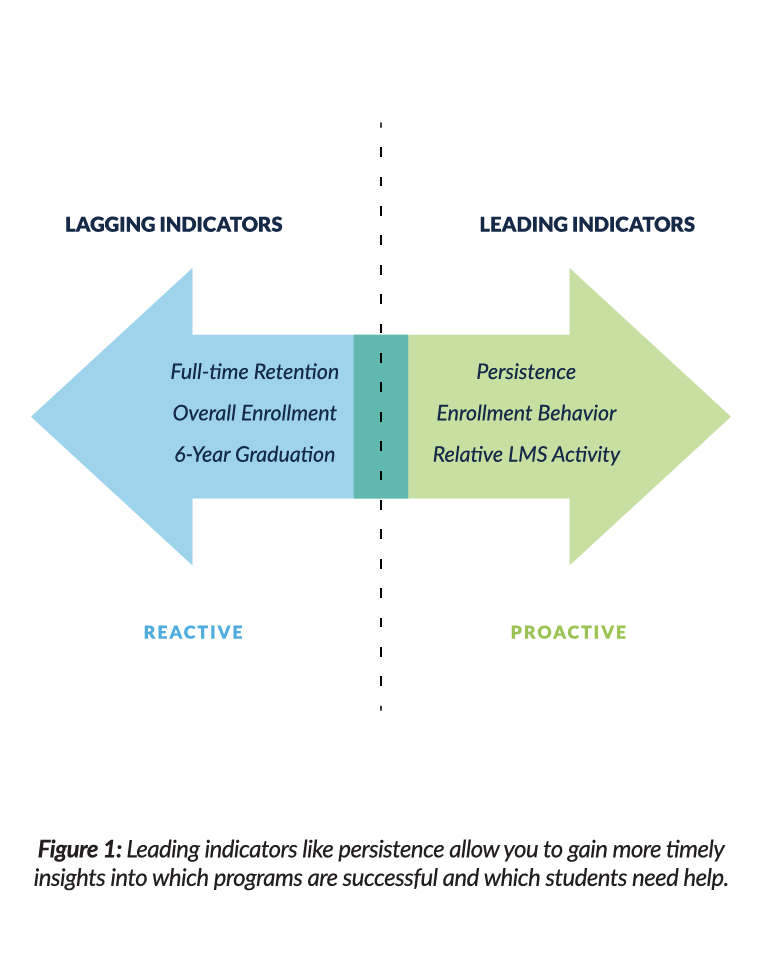
Step 2: Match Students with the Right Resources
Implementing programs that enhance student outcomes is a great start, but it won’t guarantee long-term sustainability. Successful outcomes mean connecting students to the right support instead of the same support.
By matching programs with specific student groups who will benefit most, institutions can:
- Enhance the impact and efficiency of initiatives by connecting them to the students who will benefit most
- Enable teams to improve outcomes while effectively managing capacity constraints

$1.2M in Net Tuition Revenue
The Student Advocacy team at the University of Central Oklahoma (UCO) employs targeted, data-driven communication campaigns aimed at specific student groups rather than large-scale outreach.
UCO’s intentional messaging has helped 321 students persist who might have withdrawn. This enrollment translates to $1.2 million in net tuition revenue, which supports further investment in student success.
Maximizing Academic Support Services
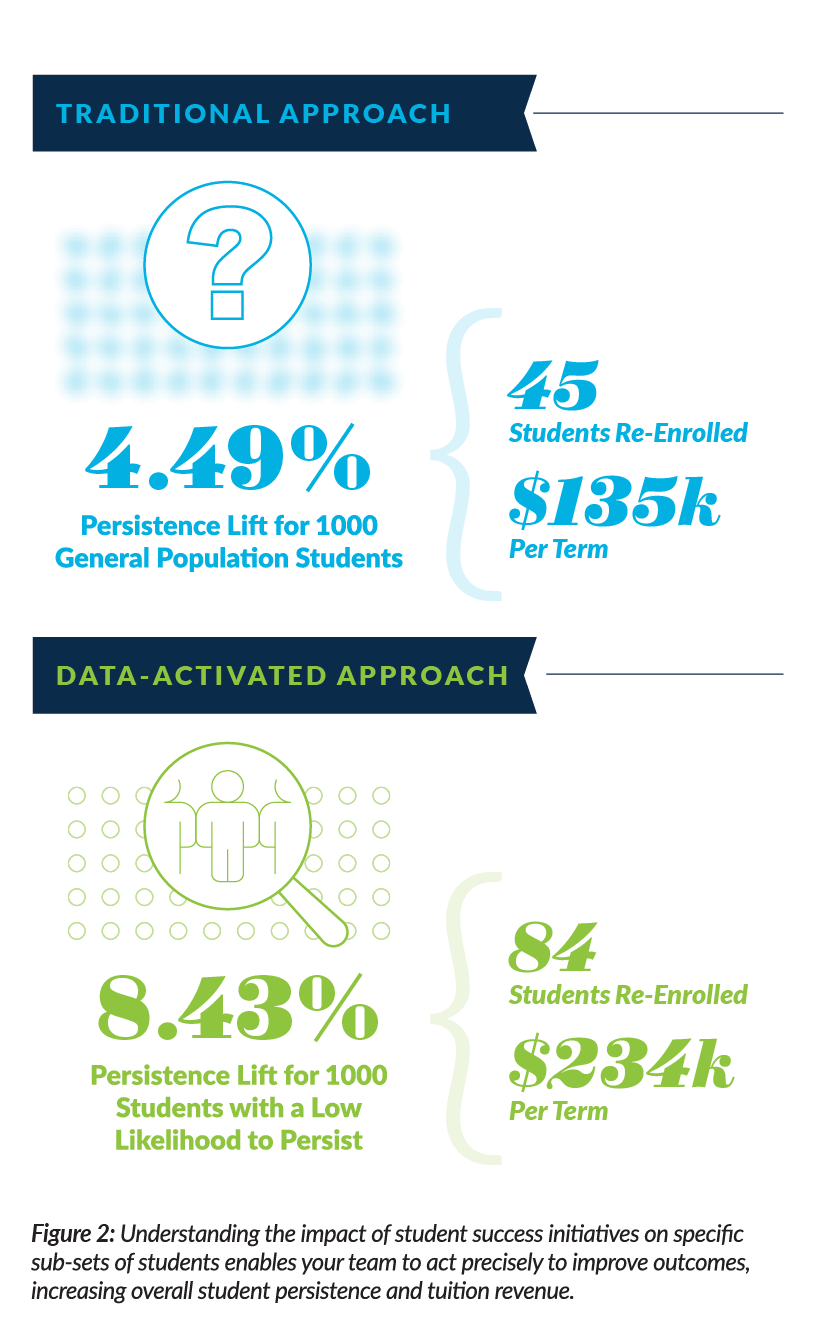
Step 3: Consistently Evaluate Initiative Efficacy
Removing the guesswork from evaluating initiatives and knowing what works for specific student segments results in more significant gains over time.
With the Civitas Learning platform’s institution-specific analytics, leaders regularly assess student success practices and policies to gain:
- Actionable insight into what works for student success at their institution to make data-informed decisions that boost student outcomes and retain tuition revenue
- Tailor initiatives to address students’ unique needs and uncover hidden barriers to success

12% Retention Increase
Snow College wanted to understand the impact 1:1 advising had on persistence to make the most of their limited advising resources.
With Civitas Learning platforms’ initiative analysis capabilities, they uncovered that students least likely to continue saw a significantly higher lift in persistence (20%) while high-performing students had just a 3% improvement. With this insight, they diversified services by offering 1:1 advising to students at higher risk of not persisting and group advising to those with a lower risk, allowing for better resource allocation without hiring additional advisors.
Understand What Moves the Needle for Your Institution
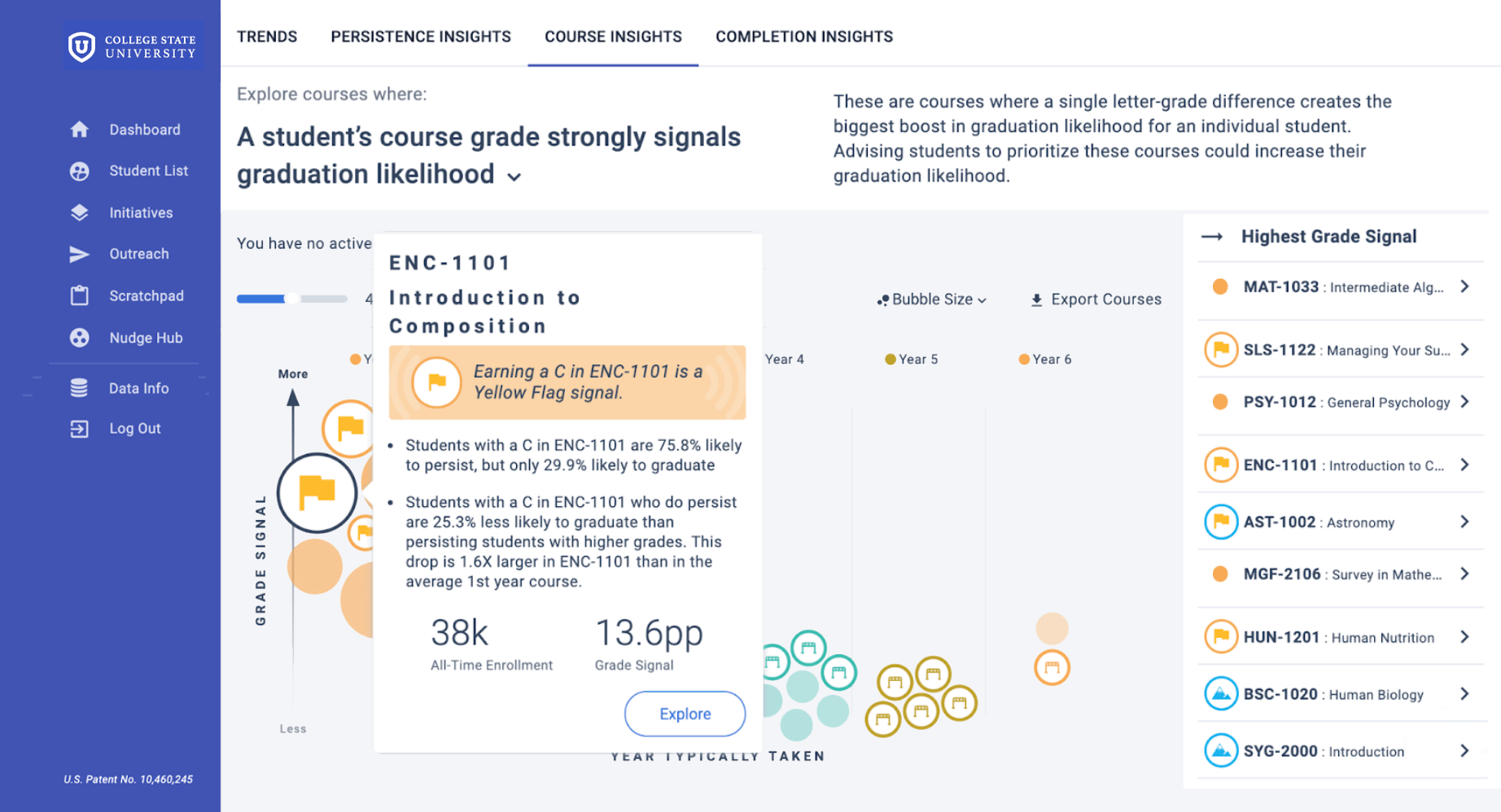
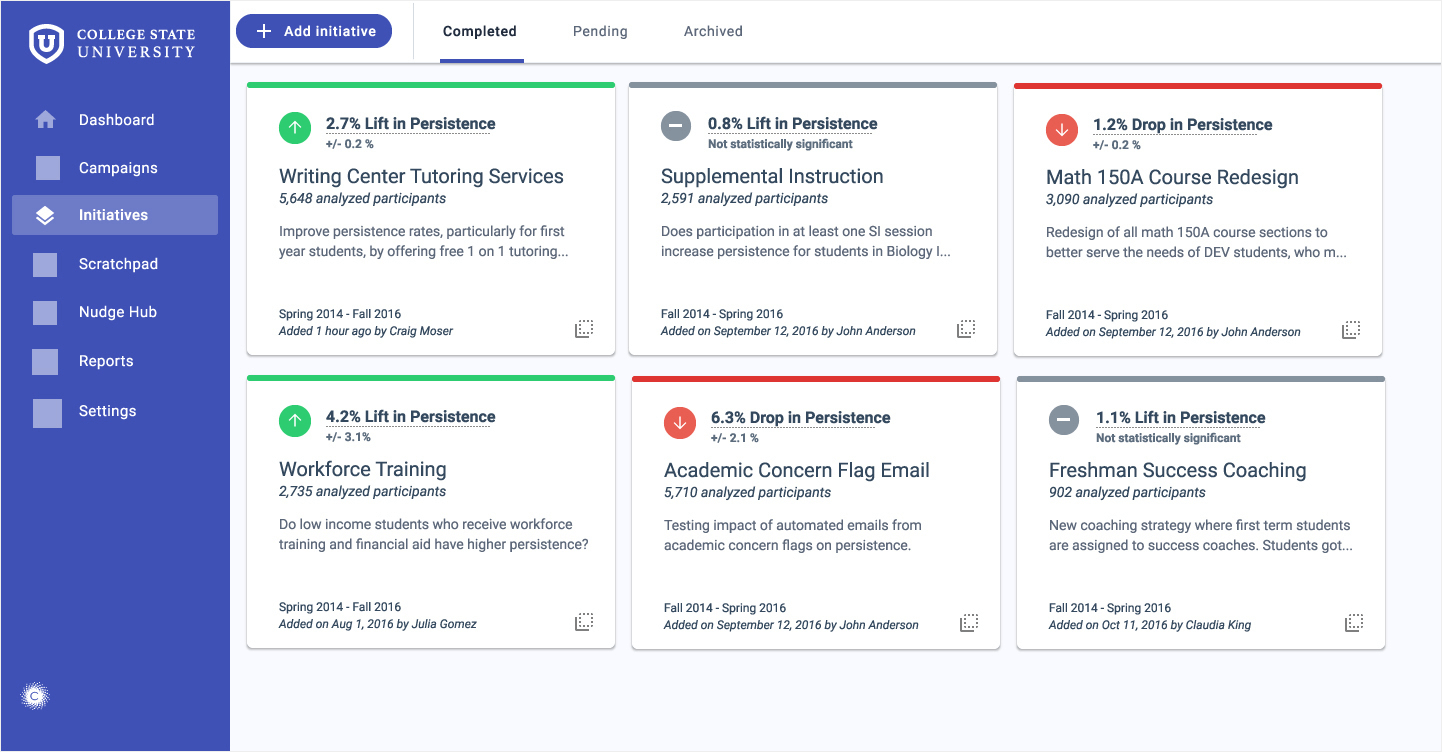
Managing costs by cutting underperforming initiatives or raising tuition only addresses part of the challenge and can be unsustainable for staff and students. Regular assessment of student success practices and policies uncovers opportunities to reallocate resources, boosting student outcomes and revenue over time.
To learn more about evidence-based strategies that drive results, check out our guide on How to Shift to an ROI-Generating Student Success Strategy.
Access the Full Guide
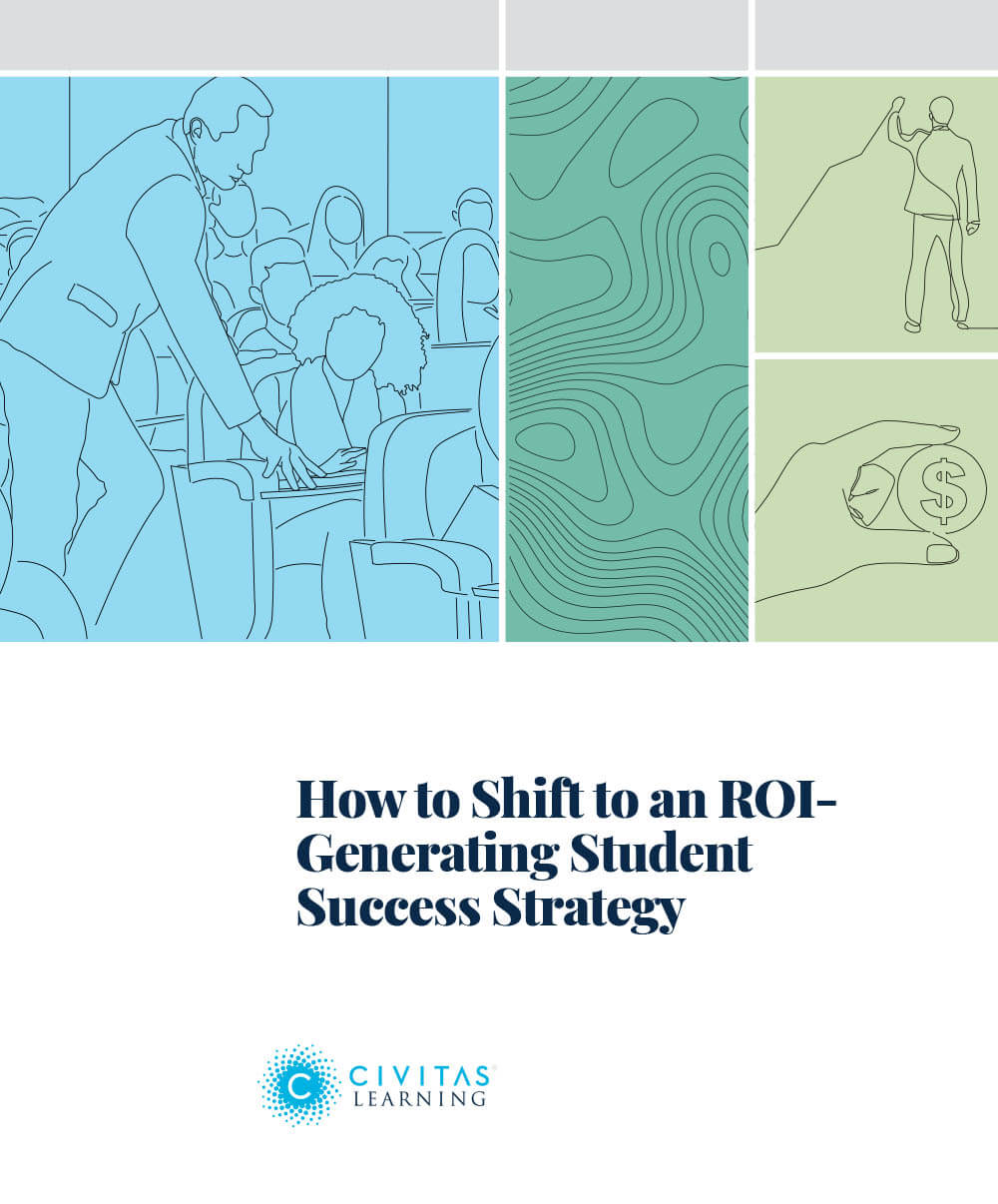
Fill out the form to access the full ROI Guide, and we’ll also email you a downloadable PDF.